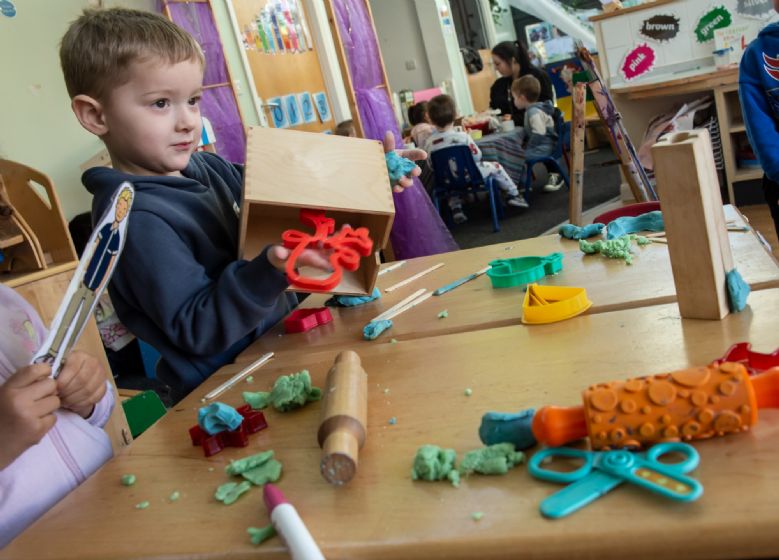Design and Technology
'Creativity is allowing yourself to make mistakes. Design is knowing which ones to keep.'
Principles of the DT & Food Curriculum
Intent - Why do we teach what we teach?
The relationship between Design & Technology and Food
The National Curriculum is clear that Cooking & Nutrition is a discrete part of the Design & Technology curriculum. In one strand of D&T, the aims of the curriculum are to:
But the aim of Cooking & Nutrition is distinct:
The purpose of the Food strand within Design & Technology is not to design dishes. While this is ultimately the skill of a chef, there is a huge amount of prerequisite knowledge that needs to be mastered before new dishes can be designed. Chefs need to know about nutrition and dietary requirements; equipment and techniques; source and characteristics of ingredients; an awareness of the principles of cooking (which Ashbee in Curriculum: Theory, Culture and Subject Specialisms (2021), describes as bases, thickening, reduction, seasoning, layering, topping, balance, contrast etc.); and a growing knowledge of tried-and-tested recipes. The knowledge that pupils are taught in Primary school should therefore focus more on this prerequisite knowledge – the basics of cooking and nutrition – and less on the design elements of the subject.
For this reason, we have a separate set of principles for Design & Technology and Food, and a separate set of sequencing documents to show how pupils will progress in each discipline.
Early Years
Within the EYFS, DT is represented through Expressive Arts and Design (both Creating with Materials' and 'Being Imaginative and Expressive'). These two areas of learning overlap and feed into each other. Children will look closely at how things work, why things happen and how they can work together to solve problems. They learn to use different materials and build on their understanding through exploring and playing with a wide range of materials. EAD is an important outlet for imagination, thoughts and ideas but also links closely to other areas of the curriculum. Inspiring children's imagination is an integral part of our EYFS practice at Victoria Road.
The right balance of Design & Technology and Food
Historically, schools have tended to teach Food much less frequently than the rest of D&T and, when it is taught, Food has tended to include ‘design’ skills such as surveys, designing dishes. This limits the time available to explicitly teach aspects of Cooking & Nutrition.
The aim of the United Curriculum for Food is to ensure that all pupils leave primary school with the ability to cook a selection of healthy dishes using a variety of techniques, and to be able to make choices about what they eat based on values like source, seasonality, and nutritional value. These life skills are even more important in the context of rising obesity and climate change.
But the practical and conceptual knowledge of Food needs to be explicitly taught and practised, and so sufficient time needs to be allocated to it. Therefore, there is one Food unit per year, and two D&T units per year. This allows sufficient time for pupils to master the important Cooking & Nutrition skills, while ensuring there is still time to deliver all the required D&T.
The United Curriculum for Design & Technology provides all children, regardless of their background, with:
Substantive knowledge:
Disciplinary knowledge:
Curiosity and excitement about the possibilities offered by Design & Technology:
The United Curriculum for Food provides all children, regardless of their background, with:
Substantive knowledge:
Disciplinary knowledge:
The ability, and desire, to cook balanced, sustainable meals for themselves and their family:
Curriculum overview: 2024-2025


Implementation - What do we teach and when?
The implementation of the United Curriculum for Design & Technology reflects our broader teaching and learning principles:
For Design & Technology in particular:
Impact - How children show that they know more and remember more?
The careful sequencing of the curriculum – and how concepts are gradually built over time – is the progression model. If pupils are keeping up with the curriculum, they are making progress. Formative assessment is prioritised and is focused on whether pupils are keeping up with the curriculum.
In general, this is done through:
Talking to pupils about their work allows teachers to assess how much of the curriculum content is secure. These conversations are used most effectively to determine whether pupils have a good understanding of the vertical concepts, and if they can link recently taught content to learning from previous units.
There are opportunities for formative assessment in the lesson slides provided, and teachers continually adapt their lesson delivery to address misconceptions and ensure that pupils are keeping up with the content.
We also use multiple-choice questions at the end of the unit to assess whether pupils have learned the core knowledge for that unit. These are used formatively, and teachers plan to fill gaps and address misconceptions before moving on.
The National Curriculum for DT and Food
Alignment to the National Curriculum: The below tables outlines where the statutory content from the National Curriculum is first taught across KS1 or KS2.


